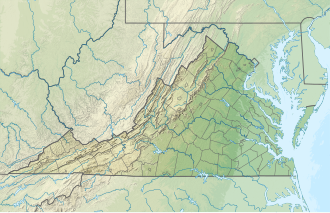| Ashby's Gap | |
|---|---|
 The view west into Ashby's Gap (2007) | |
| Elevation | 1,027 ft (313 m) [1] |
| Traversed by | |
| Location | Virginia, United States |
| Range | Blue Ridge Mountains |
| Coordinates | 39°00′49″N77°57′43″W / 39.01361°N 77.96194°W [1] |
Ashby Gap, more commonly known as Ashby's Gap is a wind gap in the Blue Ridge Mountains on the border of Clarke County, Loudoun County and Fauquier County in Virginia. The gap is traversed by U.S. Route 50. The Appalachian trail also passes across the gap.

